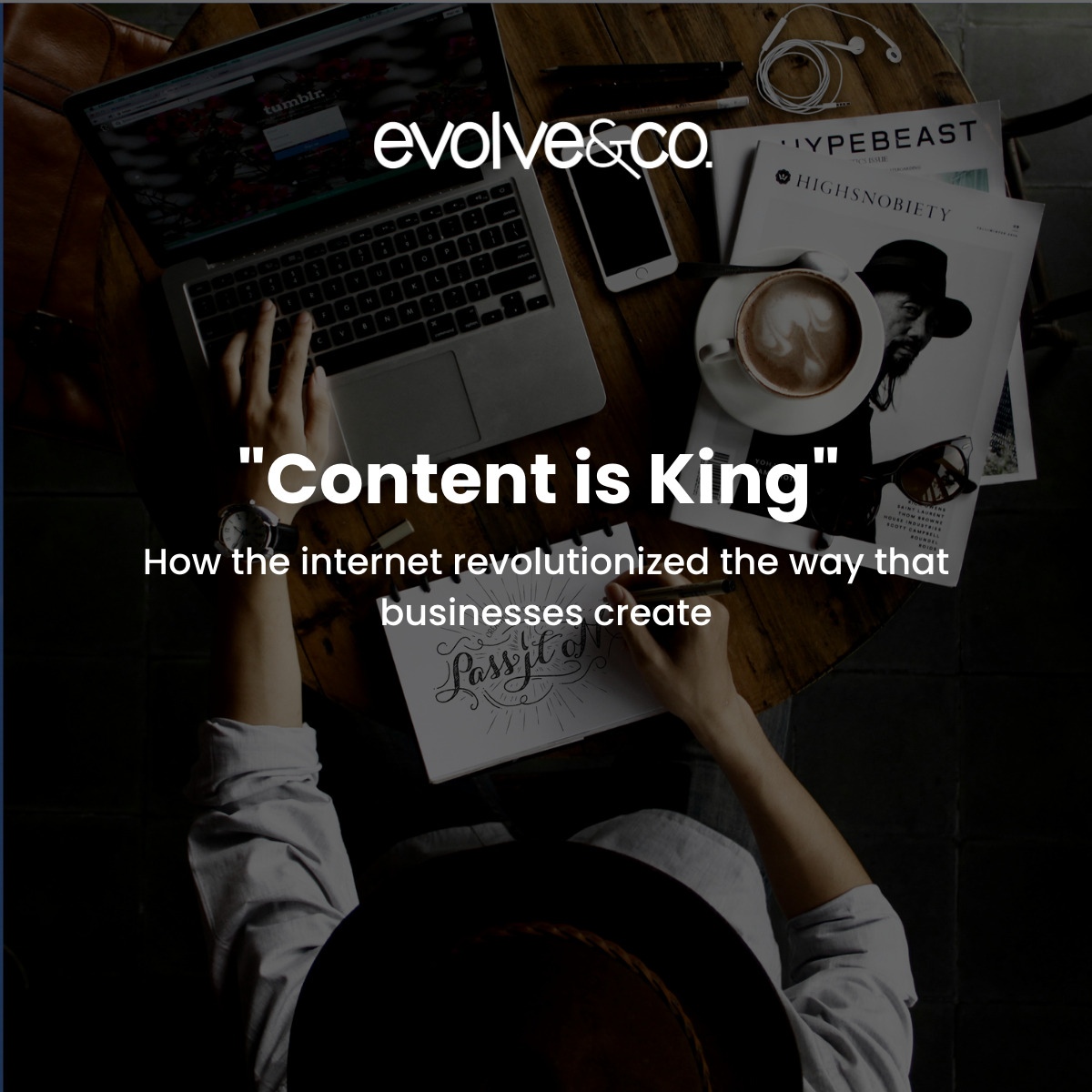Art, entertainment, and advertising — the modern world is flooded with a surplus of content. In fact, the internet’s total data has nearly doubled in the last two years alone (Bulao 2021). Our daily lives are so immersed in mass media, that we have grown numb to its ever-growing presence.
Content is everywhere, inseparably intertwined with our environment. This did not happen by mere chance, but by the natural evolution of technological progression. “Content is king” is the cliché that has been echoed throughout marketing circles for years, due to its timeless truth and increasing relevance.
Content “Gold-Rush”
The idea that content is the driving force behind the internet and mass media is popularly attributed to Bill Gates. In an essay he wrote in the 90’s, Gates highlights several important reasons for why content has become “king” (1996):
One of the exciting things about the Internet is that anyone with a PC and a modem can publish whatever content they can create. In a sense, the Internet is the multimedia equivalent of the photocopier. It allows material to be duplicated at low cost, no matter the size of the audience.
The Internet also allows information to be distributed worldwide at basically zero marginal cost to the publisher. Opportunities are remarkable, and many companies are laying plans to create content for the Internet. (para. 5-6)
Mass publication is no longer limited to specific companies or professions. Now, anyone with access to the internet can create and publish content.
Just as the Gutenberg printing press enabled revolutionary mass communication, so too does the internet. There are hardly any restrictions or boundaries preventing anyone from producing content today. There are only incentives — such as information, entertainment, and profit.
This “gold-rush”, as Bill Gates described it at the time, has created an immensely competitive digital landscape. He accurately predicted that there would be “intense competition-and ample failure as well as success-in all categories of popular content” (para. 8). Competition is necessary for improving quality of work. Each publisher trying to outperform the other generates a continual betterment and evolution of content.
Websites and content creators who don’t actively compete for impressions, will consequently become irrelevant and unsuccessful. Businesses — especially when operating online — need to create content to survive, thrive, and establish a brand that stands out from the rest.
Customer-Oriented
This competitive nature is what makes the internet so customer-oriented. Gates described it as “a marketplace of ideas, experiences, and products-a marketplace of content” (para. 26). Just as most marketplaces, the internet is made up of various entrepreneurs and businesses. Success is only possible by creating something of desire, and without prioritizing the needs or wants of consumers, businesses will inevitably fail.
Forbes reiterates that content should be holistically customer-oriented, explaining that it “centers around the customers rather than itself. It attracts people rather than interrupts them, and it’s more about them than it is about you” (Olenski, 2017). Because consumers are the focal point, good content will always embody the interests of the general public.
In other words, it’s the content that people want, and what they are increasingly becoming to expect. Content is the tool that companies use to create a competitive advantage and increase market share. It’s the bait for a business’s metaphorical hook, and the initial impression that can make or lose loyal customers.
Interactivity
Olenski further describes today’s content as “earned media”, explaining that “could you imagine what Facebook, Twitter, LinkedIn, and Snapchat would be if they didn’t have content? There would be blank spaces that no one would visit, because they have no need to” (para. 6-7). We live in an incredibly privileged day in age, where leisure is at an all-time high. People are actively pursuing content more than ever, not because they need to, but because they want to.
Bill Gates also addresses the need to improve technological interactivity:
If people are to be expected to put up with turning on a computer to read a screen, they must be rewarded with deep and extremely up-to-date information that they can explore at will. They need to have audio, and possibly video. They need an opportunity for personal involvement that goes far beyond that offered through the letters-to-the-editor pages of print magazines. (para. 11)
Interactive media makes all previous forms of content creation obsolete. The more immersive and stimulating content is, the better. And with modern technology enabling content to be so interactive and captivating, it becomes even more important to emphasize its role within any given marketing strategy.
Content is King
There should be no doubt that content reigns supreme. The accelerated influx of content creators today ensures a prosperous multimedia marketplace. Content is constantly being churned out amidst intense competition, with only the best rising to the top.
It’s how people are drawn in, how attention is retained, and how positive experiences are created. Content is truly king — cliché or not.
Sources
Bulao, J. (2021, March 18). How Much Data Is Created Every Day in 2021? [You’ll be shocked!]. TechJury. https://techjury.net/blog/how-much-data-is-created-every-day/#gref.
Gates, B. (2001). Bill Gates’ Web Site – Columns. http://web.archive.org/web/20010126005200/http:/www.microsoft.com/billgates/columns/1996essay/essay960103.asp.
Olenski, S. (2018, March 6). Why Content Will Always Be King. Forbes. https://www.forbes.com/sites/steveolenski/2017/06/21/why-content-will-always-always-king/?sh=11737dd3eb37.

